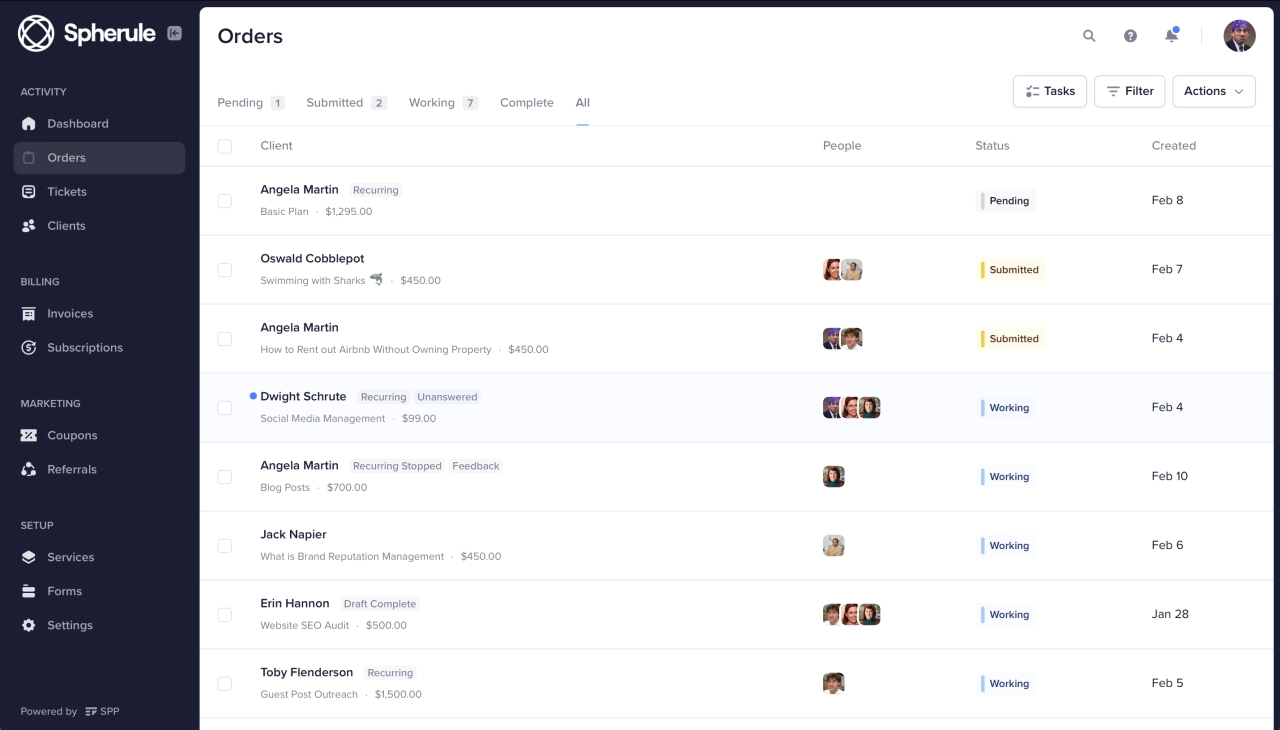- Identifying and avoiding bad clients early on can save your business resources and avoid wasting time.
- Clear communication, setting expectations, and doing research can help identify potential bad clients.
- It’s important to recognize when to say no to a potential client and focus on building relationships with good clients.
Clients are generally the lifeline of any business. It should come as no surprise that a significant source of stress for any business owner are bad clients.
Service providers will always experience these types of people. Fortunately for us, the numerous excellent clients we find typically outnumber the ones that give us a hard time.
What does a bad client look like? Most business owners probably can picture them vividly after having dealt with a few of them. They are the ones who have high demands, only to come up short when it’s time to pay the invoice. Some of them might come up with excuses as to why they deserve more than what was initially agreed upon.
As a service provider, understanding the red flags for bad clients is valuable knowledge. The truth of the matter is that knowing what to avoid helps us save both time and money.
What are those red flags though? And if you miss these warnings, how should you deal with difficult customers?
In this article, we’ll show you 5 signs how to spot a bad client, and how to handle them without damaging your reputation.
1. Bad clients request special treatment
You’ve just landed a new client, and they’re already asking for special treatment. This is a major red flag because the client hasn’t made an effort to forge a solid relationship with you. Yet, they’re already asking to receive the royal treatment.
Whether they’re asking for a better price or their demands go outside your scope of services, they’ll likely require extra work. Do not change your practices to accommodate these requests. You have probably invested a lot of time in your productized business model.
Most productized companies scale their business by specifically offering plans and one-time products that are lucrative. Keep in mind that your choices during the beginning stage of this working relationship will determine how far your client will try to push.
If refusing to accommodate special requests results in losing bad clients, it might be a valuable trade-off. You’ll have to do the math and find out how much the extra work might cost you in the short and long term. If you decide to deny extra demands, make sure to be as friendly and professional as possible. Your goal should be to keep the clients from bad-mouthing your business.
2. Bad talk about other service providers
Sometimes, there might be a good reason why a client is talking negatively about other service providers. But more often than not, voicing only negative impressions means the client is likely going to be difficult to satisfy.
Regardless of which issue they have, working with them could result in future problems for your business. Certain clients only leave negative reviews without taking time to write a positive one. Such behavior can harm your reputation in the long run unless you manage client expectations from the beginning.
If you notice your new client has a habit of constantly voicing their concerns and issues, start asking questions. Be gentle and don’t push for too much information. As the client discusses the past, you’ll learn about what you can expect from them.
3. You don’t see eye to eye on anything
The onboarding process isn’t always easy, but as time progresses, you and your clients should come to an understanding. But if your client isn’t willing to work with you, expect some trouble to arise.
This isn’t to say you need to agree with your client in every situation. But it will become a problem if a pattern persists. Without an understanding of one another and the way you run your service, both of you will suffer. And in turn, your service might feel adverse impacts.
Make sure to handle this as soon as you notice a trend in attracting bad clients. If you don’t find a way to get on the same page, you can always end things on good terms with them. Just explain that your service is not the best fit for what they need right now.
4. Boundaries are never respected
The client is not in charge of your service. And just as with any other business, you likely have rules and a routine in place. If not, here are a few tips to get started:
Teach your clients how to work with you
What should a client expect after subscribing to one of your plans? How fast is your turn around time? Are there work hours or response times they should know about?
Ideally, this information should be visible on your website’s pricing page, or an order form. If you offer a money-back guarantee, or have special terms they need to accept, make sure to add a checkbox to your order form.

Automate processes and add self-service functions
At SPP, every new client is greeted by a checklist with tasks they have to complete to get set up. This is something anyone can integrate with Bootstrap components by editing client templates.
If you want to go a step further, set up automations in MailChimp or ActiveCampaign, and put your new users into a funnel. Nurture them slowly by sending them helpful emails with tips and tricks to get started.
Another great way of showing instead of telling (each client individually) is to use client reporting. Embed reports into your SPP client portal and allow your clients to access them whenever they want. This reduces questions about your performance.
You can pipe your data into Looker Studio, or showcase your data with Google Sheets. SPP supports all major platforms.
Keep an eye on your process
Once you have a system in place, make sure that it works. A study published in the Harvard Business Review shows that customers often come from a self-service page. They often didn’t find what they were looking for, or got confused along the way. In such cases, try to optimize your self-service functions and established processes.
Of course, there’ll be cases when someone doesn’t respect the boundaries you’ve put in place either way. Dealing with bad clients can become frustrating at times, but it’s not impossible. One thing you can do is remind them about the boundaries.
For example:
I’d like to remind you that we require 72 hours to complete each task.
For clients who can’t seem to understand your hours, you can say:
Our hours of operation are from 9 a.m. to 5 p.m. EST, so please don’t expect a reply if you contact us outside that time range.
There will always be people who will not respect the set boundaries. If they continue to overstep them, it might be a better idea to part ways.
5. The relationship becomes too personal
It’s okay to be personal with your clients. They do enjoy knowing that they talk to a real person, and get an occasional email from the founder. Building a personal relationship with clients is always ideal in the service industry. But there will be times when the relationship gets too personal.
Running a service business will most likely require you to be personal with your clients. However, there’s a line that they shouldn’t cross. Whether your client is talking out of line or treating you like their personal therapist, getting too close to them can become risky. To avoid these kinds of situations, it’s ideal to highlight your boundaries whenever someone crosses them.
While these situations will vary, make sure you keep a lookout for these red flags. The best way to ensure these clients don’t become problems in the future is to fix the issues as soon as you notice them.
Conclusion
Trying to stop delighting your clients is not an easy task. However, constantly going the extra mile to please bad clients does more harm than good in the long run. From the perspective of a business owner, each new client is seen as a small treasure. And while most of the time, this is true, one rotten apple can spoil the barrel.
The above blog post has shown five ways you can spot bad clients, and how to deal with them. Take the feedback from your disgruntled customers to heart, and find a way to optimize your processes. Solving customer issues while also collecting the feedback can significantly increase your issue-resolution rate.




